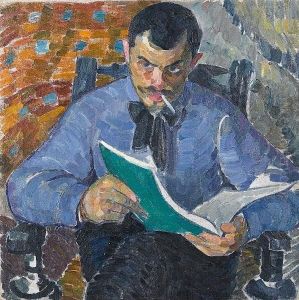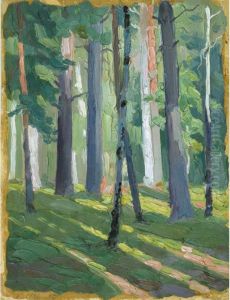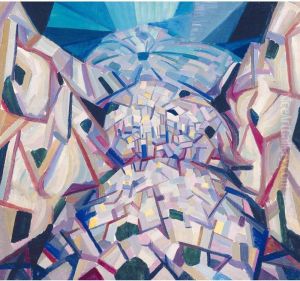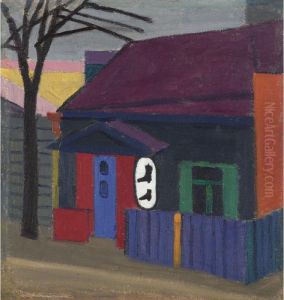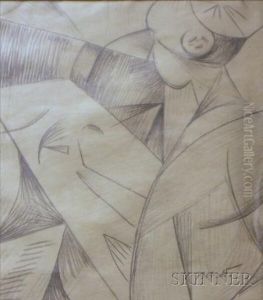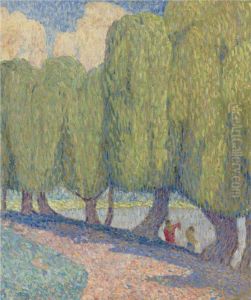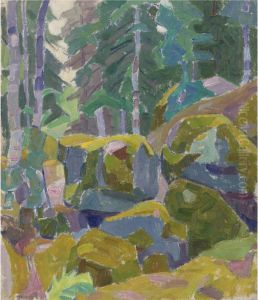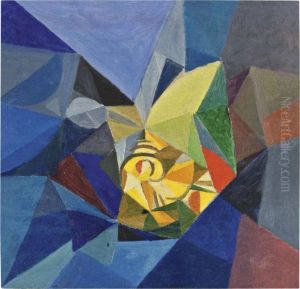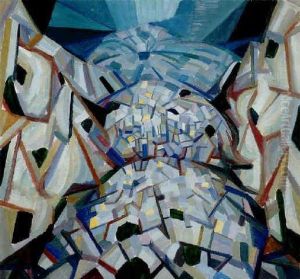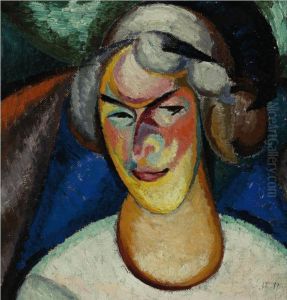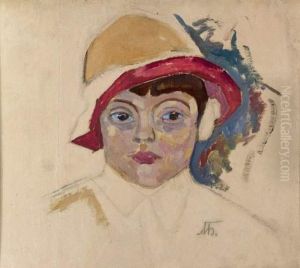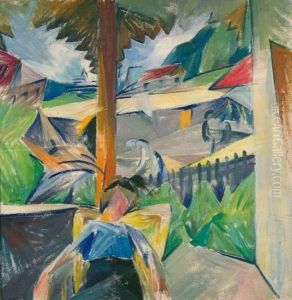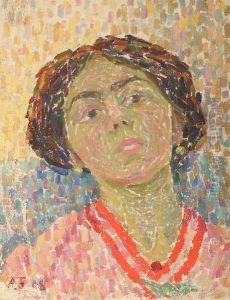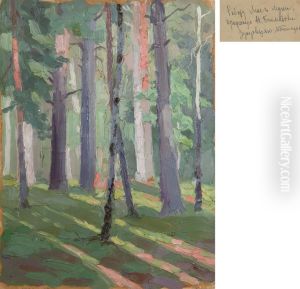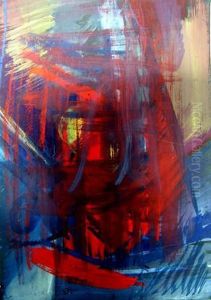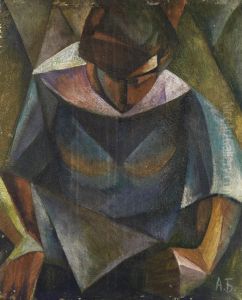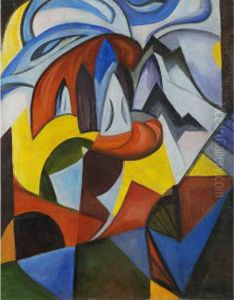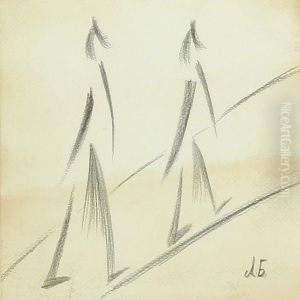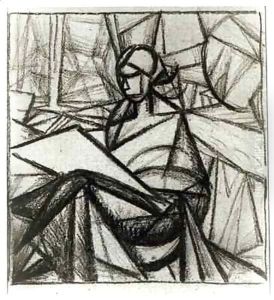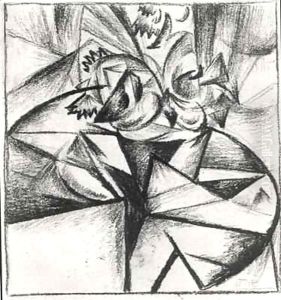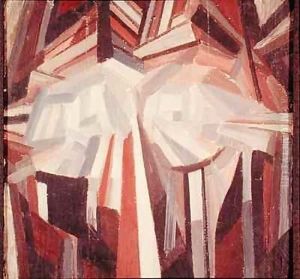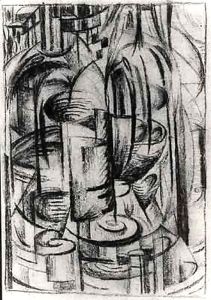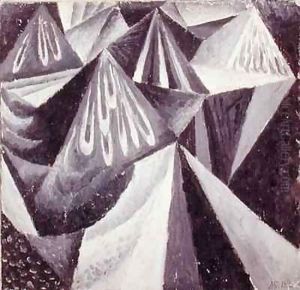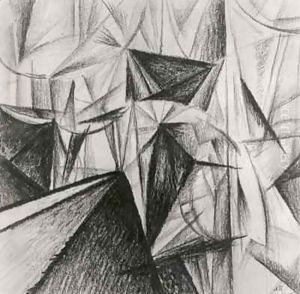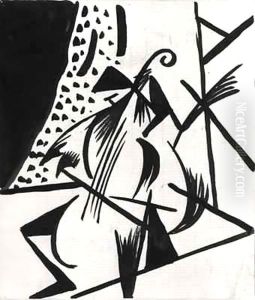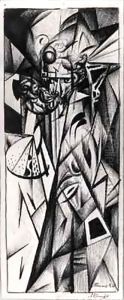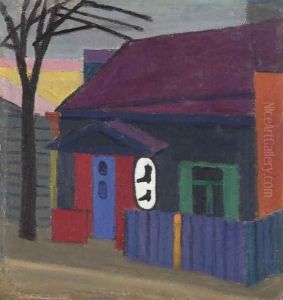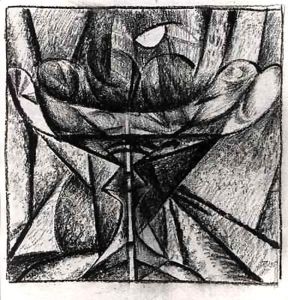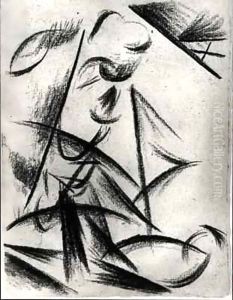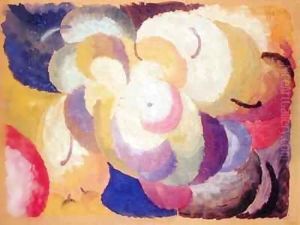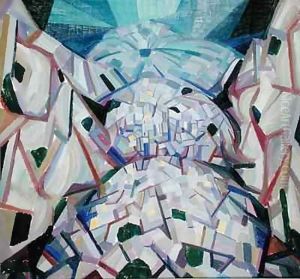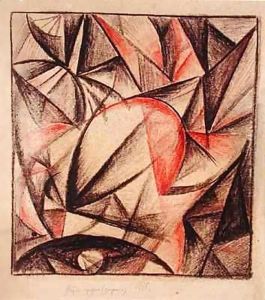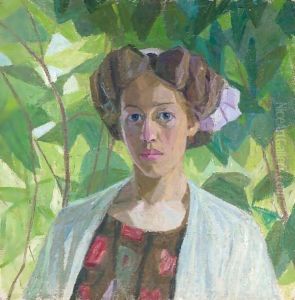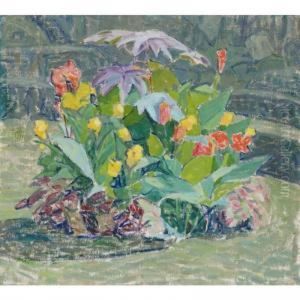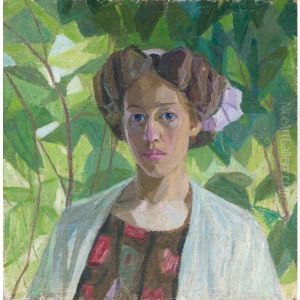Alexander Konstantinovich Bogomazov Paintings
Alexander Konstantinovich Bogomazov was a pioneering figure in the Ukrainian avant-garde art movement in the early 20th century. Born on April 7, 1880, in Yampil, Russian Empire, now Ukraine, Bogomazov displayed a talent for drawing from an early age. He studied at the Kiev Art School from 1896 to 1901 and later attended the Moscow School of Painting, Sculpture and Architecture. His early work was influenced by Impressionism, but he quickly developed an interest in more radical art movements.
In 1911, he moved to Kiev, where he deepened his exploration of art theory and practice. He was particularly influenced by Cubism and Futurism, which led him to develop his own unique style that focused on the dynamic interplay of colors and forms. His theoretical work, 'Painting and Elements of Composition,' written in 1914, outlined his ideas about the rhythmic patterns and spatial arrangements that became central to his art.
During World War I, Bogomazov served in the Russian Army, and this experience impacted his artistic vision. In 1919, Bogomazov became a teacher at the Kiev Art Academy, where he was an influential figure to the next generation of Ukrainian artists. His work during this period was characterized by a bold use of line and color, and he often depicted industrial and urban themes, reflecting the changes in society and the advance of technology.
The 1920s were a difficult time for Bogomazov, as his avant-garde style fell out of favor with the rise of Soviet Realism, which became the state-sanctioned art form. Despite the challenges, he continued to paint and teach, although his opportunities for exhibiting his work were severely limited.
Bogomazov's health deteriorated in the late 1920s, and he passed away on June 3, 1930, in Kiev. His work was largely forgotten until it was rediscovered in the late 20th century, and he is now recognized as one of the key figures in the development of abstract art in Eastern Europe. His paintings are noted for their innovative approach to form and color, and he remains an important figure in Ukrainian art history.
